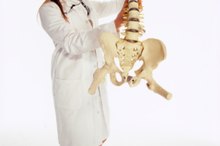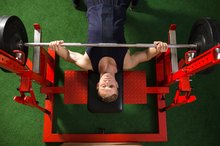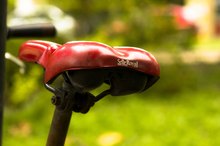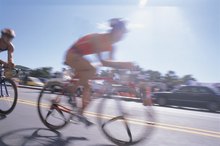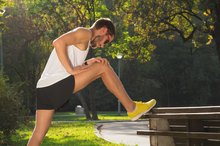What does fact checked mean?
At Healthfully, we strive to deliver objective content that is accurate and up-to-date. Our team periodically reviews articles in order to ensure content quality. The sources cited below consist of evidence from peer-reviewed journals, prominent medical organizations, academic associations, and government data.
- International Journal of Antimicrobial Agents: Epidemiology of Prostatitis
- International Journal of Antimicrobial Agents: Epidemiology of Prostatitis
- Deutsches Ärzteblatt International: Prostatitis and Male Pelvic Pain Syndrome
- Deutsches Ärzteblatt International: Prostatitis and Male Pelvic Pain Syndrome
The information contained on this site is for informational purposes only, and should not be used as a substitute for the advice of a professional health care provider. Please check with the appropriate physician regarding health questions and concerns. Although we strive to deliver accurate and up-to-date information, no guarantee to that effect is made.
Causes of Prostate Pain When Sitting
Pain in the area between the penis and rectum when sitting is most often associated with inflammation of the prostate, or prostatitis. It may feel like you are sitting on a golf ball or other hard object. Conditions such as infection, an underlying medical condition or pinched nerve can cause this type of pain.
If you are experiencing serious medical symptoms, seek emergency treatment immediately.
Bacterial Infection
Prostatitis can have both bacterial and non-bacterial causes. Acute -- temporary -- and chronic -- long-lasting -- bacterial infection occurs as a result of back flow of urine leaking into the prostate ducts. Bacterial prostatitis is not a sexually transmitted disease, nor is it contagious. Whether the infection is acute or chronic, inflammation of the prostate results in tenderness and swelling that can cause prostate pain, or pain in the perineum. Sitting as a means of coping with prostate pain will typically make symptoms worse.
- Prostatitis can have both bacterial and non-bacterial causes.
Non-bacterial Causes
Causes of Aches in the Prostate
Learn More
Non-bacterial prostatitis or chronic pelvic pain syndrome is the most common type of prostatitis 2. The exact causes of the non-bacterial infections are unknown. Potential causes include infection by organisms such as chlamydia that are not usually found in the prostate, inflammation due to an immune system response to an injury or previous infections, or muscle spasms in the pelvis that irritate the prostate. All of these can cause perineal tenderness or discomfort that can be aggravated by prolonged sitting or activities -- such as bicycling -- that put pressure on the perineum.
- Non-bacterial prostatitis or chronic pelvic pain syndrome is the most common type of prostatitis 2.
- Potential causes include infection by organisms such as chlamydia that are not usually found in the prostate, inflammation due to an immune system response to an injury or previous infections, or muscle spasms in the pelvis that irritate the prostate.
Pinched Nerve
The pudenal nerve supplies the genitals in both men and women, as well as the lower rectum and the perineum. A pinched or compressed pudenal nerve can cause pain in the area of the prostate. Damage to this nerve can be caused by prolonged pressure -- such as sitting on a bicycle seat, trauma, surgery or tumors. Pain typically increases with sitting and may be relieved with standing.
- The pudenal nerve supplies the genitals in both men and women, as well as the lower rectum and the perineum.
- A pinched or compressed pudenal nerve can cause pain in the area of the prostate.
Related Articles
References
- International Journal of Antimicrobial Agents: Epidemiology of Prostatitis
- Deutsches Ärzteblatt International: Prostatitis and Male Pelvic Pain Syndrome
- American Journal of Roentgenology: Chronic Perineal Pain Caused by Pudendal Nerve Entrapment -- Anatomy and CT-Guided Perineural Injection Technique
- Cleveland Clinic. Prostatitis. Updated October 25, 2016.
- National Institute of Diabetes and Digestive and Kidney Diseases. Prostatitis: Inflammation of the Prostate. 2014.
- Lipsky BA, Byren I, Hoey CT. Treatment of bacterial prostatitis. Clin Infect Dis. 2010;50(12):1641-1652. doi:10.1086/652861
- Vasdev M, Thorpe AC. Chronic Prostatitis/Chronic Pelvic Pain Syndrome. In: Nikibakhsh A, editor. Clinical Management of Complicated Urinary Tract Infection. 2011. doi:10.5772/22038
- Jiang J, Li J, Yunxia Z, Zhu H, Liu J, Pumill C. The role of prostatitis in prostate cancer: meta-analysis. PLoS ONE. 2013;8(12):e85179. doi:10.1371/journal.pone.0085179
- Prostatitis - Nonbacterial: MedlinePlus Medical Encyclopedia (U.S National Library of Medicine).
Writer Bio
Michael O’Leary has been covering medical research and health care since 1988. He served as senior science writer at the Fred Hutchinson Cancer Research Center and as managing editor for the treatment decision tools on the American Cancer Society site. O'Leary is a certified medical writer and has a Bachelor of Arts in English from the University of Washington.
